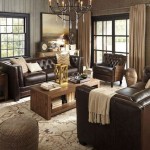How To Decorate a Dining Table For Everyday Use
The dining table often serves as the heart of the home. Beyond its primary function of supporting meals, it acts as a gathering place for family and friends, a workspace, and a decorative focal point. Decorating a dining table for everyday use requires a balance between style and practicality. The goal is to create an inviting and aesthetically pleasing space that is also functional and doesn't hinder daily activities. It is essential to consider durability, ease of cleaning, and the overall ambiance the table setting aims to create.
Choosing the right elements and arranging them thoughtfully can transform an ordinary dining table into a welcoming and stylish area. This involves layering textures, selecting appropriate centerpieces, and paying attention to the details that contribute to the overall aesthetic. The key is to personalize the space to reflect the individual style of the home and the needs of the household.
Selecting a Durable and Easy-to-Maintain Table Covering
The foundation of any dining table setting is the table covering. This can range from a full tablecloth to a simple runner or even individual placemats. The selection should prioritize durability and ease of maintenance, especially for everyday use. Materials like cotton, linen blends, and synthetic fabrics are popular choices due to their resilience and ability to withstand frequent washing.
A tablecloth provides comprehensive protection to the table surface and offers an opportunity to introduce color and pattern. When selecting a tablecloth, ensure the size is appropriate for the table, allowing for a consistent overhang on all sides. A standard overhang is typically between 8 and 12 inches. However, this can be adjusted based on personal preference and the desired aesthetic. Using a tablecloth also provides an ease of layering place settings and hiding any existing imperfections of the table itself.
Table runners, on the other hand, offer a more streamlined and contemporary look. They can be placed lengthwise down the center of the table or across the width, depending on the table's shape and the desired effect. Table runners are particularly effective for showcasing the table's natural material, such as wood, while still providing a decorative element. They can be paired with placemats for individual settings to further protect the table surface.
Placemats are a practical and versatile option for everyday use. They are easy to clean and can be quickly changed to update the table setting. Placemats come in a variety of materials, including fabric, vinyl, bamboo, and cork. The choice of material will depend on the desired aesthetic and the level of protection needed. For instance, vinyl placemats are highly durable and easy to wipe clean, making them suitable for households with children. Fabric placemats offer a softer and more elegant look but require more care. The shape of placemats often varies from square and rectangular to round and oval shapes, allowing for customization based on table shape and preference.
Consider the color and pattern of the table covering in relation to the overall decor of the dining area. Neutral colors and simple patterns are versatile and can easily adapt to different seasons and occasions. However, bolder colors and patterns can add personality and visual interest to the table setting. Ensure that the chosen color complements the dining room's color scheme and does not clash with other decorative elements.
Creating a Balanced and Functional Centerpiece
The centerpiece is a crucial element of any dining table decoration. It serves as a focal point and adds visual interest to the space. However, for everyday use, the centerpiece should be both aesthetically pleasing and functional, avoiding excessive height or bulkiness that would impede conversation or interfere with meal service. The centerpiece should be designed to be easily movable or adaptable when the table is in use for dining.
Simple floral arrangements are a classic and versatile choice for a dining table centerpiece. A single vase with fresh flowers can add a touch of elegance and freshness to the space. Opt for flowers that are in season and complement the color scheme of the dining area. Alternatively, a small collection of potted plants can create a green and natural centerpiece. Succulents, herbs, and small flowering plants are excellent options that require minimal maintenance. Avoid strongly scented flowers, as they can interfere with the enjoyment of meals.
Candles are another popular choice for a dining table centerpiece. They add warmth and ambiance to the space, especially during evening meals. Choose candles that are unscented or have a subtle fragrance to avoid overpowering the dining experience. A group of candles of varying heights and sizes can create a visually appealing arrangement. Consider using candle holders that complement the overall style of the dining area. Be mindful of safety when using candles, ensuring they are placed away from flammable materials and are never left unattended.
A decorative bowl or tray can also serve as a functional and stylish centerpiece. This can be filled with seasonal items, such as fruits, vegetables, or decorative gourds. Alternatively, it can be used to hold everyday items, such as napkins, coasters, or small decorative objects. The bowl or tray should be chosen to complement the overall aesthetic of the dining area and should be made of a material that is easy to clean.
Consider the size and shape of the dining table when selecting a centerpiece. For a rectangular table, a long and narrow centerpiece is often the most suitable option. For a round or square table, a symmetrical centerpiece works well. Avoid overcrowding the table with too many decorative elements. The goal is to create a balanced and visually appealing arrangement that enhances the dining experience without being intrusive.
Incorporating Practical and Decorative Accents
Beyond the table covering and centerpiece, incorporating practical and decorative accents can elevate the everyday dining table setting. These accents should enhance the functionality of the table while also adding visual interest and reflecting the individual style of the home. Elements such as napkins, napkin rings, place card holders (even for everyday meals), and small decorative objects can contribute to the overall aesthetic.
Napkins are a practical necessity for any dining table setting. Choose napkins that are made of a durable and easy-to-clean material, such as cotton or linen. Cloth napkins add a touch of elegance to the table, while paper napkins are more convenient for everyday use. Consider the color and pattern of the napkins in relation to the table covering and the overall decor. Fold the napkins in a simple and elegant manner, or use napkin rings to add a decorative touch.
Napkin rings are a small but impactful detail that can elevate the dining table setting. They come in a variety of materials, including metal, wood, and ceramic. Choose napkin rings that complement the overall style of the dining area. Simple and understated napkin rings are suitable for everyday use, while more elaborate napkin rings can be used for special occasions. Napkin rings can also be used to add a pop of color or texture to the table setting.
Small decorative objects can be used to add visual interest and personality to the dining table. These can include small vases, figurines, or decorative bowls. Choose objects that complement the overall style of the dining area and that do not clutter the table. Consider using objects that reflect the season or a particular theme. For instance, during the fall, small pumpkins or gourds can be used as decorative accents. During the holidays, small ornaments or candles can add a festive touch.
Place card holders, even if not used for formal seating arrangements, can add a touch of whimsy to the everyday dining table. Small, decorative place card holders can be used to display inspirational quotes, family photos, or even small notes for each diner. This adds a personal touch to the table setting and makes each meal feel special.
When incorporating practical and decorative accents, it is important to maintain a balance between style and functionality. The goal is to create a table setting that is both aesthetically pleasing and practical for everyday use. Avoid overcrowding the table with too many decorative elements. The focus should be on creating a welcoming and inviting space that enhances the dining experience.

8 Décor Tips For Your Dining Table Everyday Classic Casual Home

Dining Table Decor For An Everyday Look Room Centerpieces Home

Beautiful And Easy Dining Room Table Centerpiece Ideas Stonegable

Dining Table Decor For An Everyday Look Tidbits Twine

Dining Room Table Centerpieces 10 Ideas For Everyday Travis Neighbor Ward

19 Ideas For How To Decorate A Dining Room Table Everyday Hen And Horse Design

55 Everyday Dining Table Decor Ideas Craftionary

7 Dining Table Styling Ideas For Everyday Use Adorn The

Everyday Tips For Decorating The Dining Table

19 Ideas For How To Decorate A Dining Room Table Everyday Hen And Horse Design
Related Posts







